#duckweed fern
Text

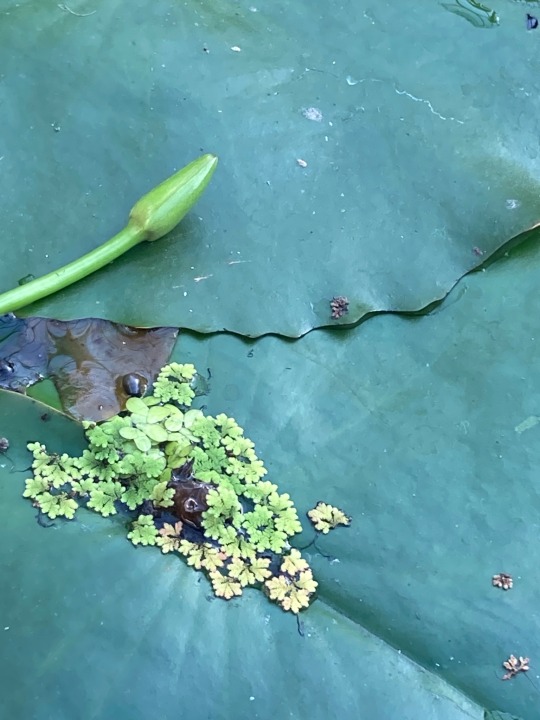
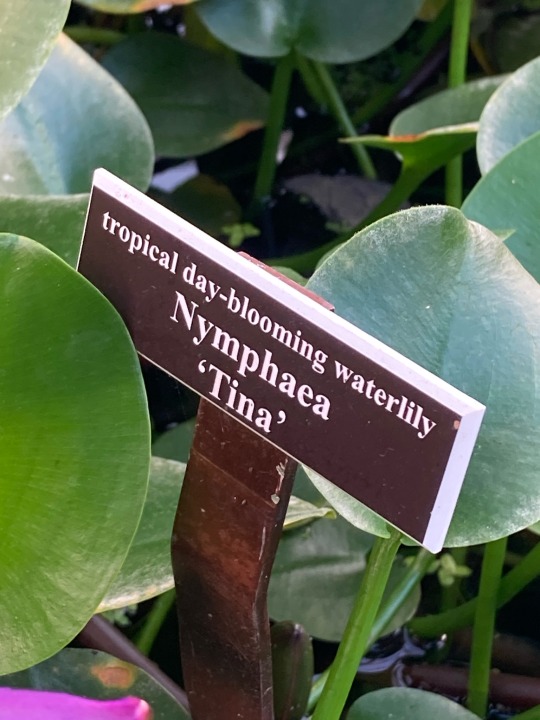
#water lily#lotus#nymphaea tina#lily pads#mosquito fern#duckweed fern#azolla#aquatic plants#lily pond#greenhouse#conservatory#new york botanical garden#the bronx
6 notes
·
View notes
Text
Azolla filiculoides, Duckweed fern
Azolla filiculoides, Duckweed fern
Azollaceae/Salvinaceae
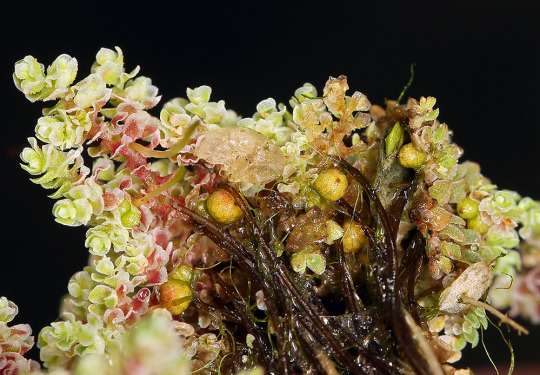

KEY
Aquatic plant with no flowers or bulbs, sporangia present
Plant body various, leaves various, plant free-floating, emergent, or submersed
Plant raft-like, free-floating on water surface or stranded along shore or in drying bottom sediments, breaking apart into individuals or small clumps
Plant body differentiated into a short, often branched stem with small, minutely velvety-papillate, scale-like leaves
Leaves 0.5–1.5 mm, alternate [each with a thick green or ± red-tinged floating lobe and a thin, colorless submersed lobe]; upper surface of floating lobe papillate or with short, inconspicuous hairs [Azollaceae]
Stems forming round to elongate plants to 3 cm, 2 cm wide; leaves ovate or oblong-ovate, generally 1.2–2 mm, 1 mm wide; leaf margins of upper (± green or ± red) leaf lobes with broad ± white band of cells >= 4 cells wide; male spore mass barbs lacking partitions
DESCRIPTION
Annual Fern, California Native, usually found in ponds and slow streams. Small free floating fern on mud/water roots. Green to +- red. with white margins ,round to elongate plants to 3 cm, 2 cm wide.
Roots Rhizome: roots hang in water, form dense clump
Stem: fork, pinnate thread like, generally 1--3 cm: immature prostrate, internodes < 5 mm;
Leaf: small overlapping scale like leaves cover stem, leaf has sublte papillae, green-red
Sporangium Case: clear yellowish orb, female with distinct equatorial girdle, wall tubercled and pitted. male spores mass barbs lacking partition
Fun facts: Used as green manure in rice paddies because of nitrogen-fixing algae (cyanobacterium Ananbaena Azollae) in upper leaf lobe. Made fossil fuels and can double it mass in 3 day
SOURCES AND MORE INFORMATION
Jepson eflora Azolla filiculoides
Integrated Taxonomic Information System - Report
Calscape Mosquito Fern
Wildflower Search
Youtube of Azolla filiculoides
#california native plants#ca native#annual fern#Azolla filiculoides#duckweed fern#azollaceaea#mother of fossil fuels#nitrogen fixing#pacific azolla#pacific mosquito fern#azolla#azollaceae#salviniales#polypodiopsida#tracheophyta#plantae#plants#scv native
1 note
·
View note
Text
i just made a fish tank journal which i shouldve done like... 2 years ago when i started keeping fish ^_^;
#txt#i just noticed red? hair algae on my sponge filter and java fern so im assuming its bc i just swapped tanks and everything needs to adjust#<- my filters are seeded obvs the og 20tall was running for 2yrs with the same filters and they didnt dry out.#and everything in it is the same as the previous tank i just swapped it over and added half new half old water#i think it might? be bc of the photoperiod and the fact that i chucked all my duckweed b4 swapping tanks#and everything else in my tank doesnt soak up nutrients as fast... sigh
3 notes
·
View notes
Text
being an impatient person is the worst. if i don’t see immediate results from investing time in something i Will Die
#txt#i'm trying to teach myself to be more patient but it's a struggle ;w; i hate it#recently started my own plant farm (just anubias + java ferns + duckweed so far) and everything except the duckweed is growing so SLOWLY ugh#i've been using ferts + leaving the lights on long enough. it just takes time#ik co2 would help but i don't have the $ for it + i'm scared of the canister exploding lmao
6 notes
·
View notes
Note
Hi! I hope you're doing well!! I was wondering about a Clanmew word for algae; and was also wondering if the clans would have distinct words for seaweed (after salt patrols start up) and/or lake weeds?
You know, it's actually been ridiculously difficult to get good research on marine biomes!! A while back I got the ADHDesire to learn as much as possible about the diet of the fish the Clan cats would be hunting in White Hart vs Sanctuary, and found that a ton of the research is super patchy and hard to access.
So with that said; know I'm still trying to learn about and compile what specific species they deal with, and what is a good indicator of water health, feeds animals, is dangerous, etc. These words I am going to give you are generic terms.
Scum/Algae = Blaw
The slimy plant material that grows on things underwater.
Float = Wurrf
A type of plant that is either anchored to the soil, or floats freely in a body of water. Lilypads and duckweed are examples of this sort of plant.
Kelp = Howyyr
NOT exactly kelp; plants that are completely submerged in water. Can also refer to things underwater that could tangle and drown you.
Reed = Sirr
The general word for the long, grass-like plants that grow in shallow water. Doesn't just refer to common reed, but to rush, water bistort, cattails, etc.
But to answer the question on seaweed; there's no understanding of what that plant is when it's not washed up on a beach. They don't know anything about ocean ecosystems. They call it "Weskan Rraash," Salt Fern!
39 notes
·
View notes
Text
More sub biomes and a further updated map!
Here are some sub biomes from the forest and swampland biomes!
Redwood forests
Huge forests of giant redwood trees, where plants like ferns and berry bushes, and ivy are common. This is the biome that Eldur city once resided in.
Swamp wastelands
A swampy muddy area with very few large trees, most foliage remains close to the ground and is often decaying as mushroom growth is common here.
Myco island
An island where a majority of life is made up of mushrooms! Large ones resembling trees, as well as few trees themselves! Though any true tree in this island has been taken over by the mushrooms and mycelium
Grand oak forest
Grand oak forests are somewhat similar to the standard oak forest, except the trees here are meters thick, often growing non-functional faces in the centre of their trunks. Albino animals are common here, as predators are sparse.
Myco forests
Myco forests are a sub biome of the Myco island, Myco forests used to be lush forests before the spores of Myco island spread through the woods. Now the trees are barren and covered ins many species of mushrooms.
Lush taiga
Lush tiara is are a transitional sun biome between the polar forests and standard forests. They are full of tall thick pine trees, covered in moss and mushrooms.
Forested swamps
Forested swamps lie between the swamp safe lands and forests. This sub biome is full of many small streams, abundant with lily pads, moss, and vines, thin small trees make up the forest of these forested swamps.
Willow swamps
Lush swamps lined with weeping Willow trees, small streams and lakes filled with algae and duckweeds, an abundant sub biome where the sun shines brightly through the leaves.
Grassy marshes
The grassy marshes are patches of grasses both tall and short, growing within shallow waters .
———————————————————
And again if you ever want to add your ideas to this fantasy world you are always welcome to submit them! Either through dms or ask box or even just a post of your own (but tag me so I can reblog it :))!
Prompts and updated map below the cut!
Prompts:
What would a mountainous sub-biome look like?
Would there be any sub biomes where the people of Kenalia don’t enjoy being in/refuse to stay in?
What landmarks or civilization would you find in the lush taiga?
What kind of creatures live on Myco island?
Why is it common for the grand oak trees to grow faces?
And here’s the updated map!!

11 notes
·
View notes
Text
5 months into my planted tank journey and it's a beautiful blend of growth, challenges, and triumphs 🌿💧.
Battling black beard algae with new strategies, marveling at the lush growth of Java Fern and Anubias, and witnessing the vibrant dance of neon tetras and chili rasboras. 🐠🌱
From innovative duckweed management to the bustling life of shrimp and corydoras, every corner of this tank tells a story of patience and passion.
2 notes
·
View notes
Text

Oh man, the Java fern is Not looking good. It's rotting away and losing a lot of matter. From what I've read online it's likely receiving way too much direct light, so I'm considering putting a film in front of the light to dim it a bit. In my last tank there was a layer of duckweed that blocked a lot of the light, so I'm hoping the melting will stop once the duckweed reestablishes itself.
I'm always waiting for a new tank heater to arrive since my room is a bit cooler than the recommended temperature the fern likes. I'm hoping these interventions will help the fern to push out new growth.
5 notes
·
View notes
Text
@foxindarkness asked
Hey! I think you haven't done Nan Elmoth yet in your flora and fauna series, and I'd really really love to see your take on it, especially if you feel like making one of your gorgeous boards to go with it!
Flora, fauna, geography and environment of Arda
As always this is not a complete list! Please always feel free to ask for more details about any category (birds, fern, spring plants, etc)
Nan Elmoth or the Valley of Stars was a deep forest East of Doriath and on the Eastern banks of the river Celon, a tributary to Aros which was itself a tributary to Sirion.
We can only speculate about the species of trees that grew here with the primary descriptor being that they block the sun.
The climate and habitat is a deep, mixed deciduous forest with high moisture, higher than most of Doriath.
Mountain ash or Rowan, common beech and oak, and some towering pine trees are the most common species. Importantly, Yew trees grow throughout Nan Emloth and produce patches of near darkness where little else can grow.
Field and wych elms grow by the banks of Celon, needing the moist, sandy soil.
Bitter or woody nightshade grows throughout the vale as does arum, sweet violet, Great sallow, soft rush, royal ferns and bracken, common fragile fern, baneberry, black touch me not
Green shield moss, silky forklet moss, thyme moss and grey-cushioned grimmia are examples of species of mosses that grow on land in the valley.
Destroying angel mushrooms grow in the birch groves and funeral bell, panther’s cap, false death cap, bay bolete, lichens like Cladonia bellidiflora, Lobaria virens and beard lichens grow throughout on and around both decaying and healthy trees.
There was apparently a small lake or pool called Gladuial. This was likely a spring fed by ground water or a vestigial pool that remained fed by precipitation throughout the year
Common water moss clings to rocks in the river Celon, thriving in the shade the trees of Nan Emloth provide. Water starwort also grows here.
There are a number of vernal pools dotted throughout the forest Small vernal pools like these are always wonderfully diverse mini ecosystems.
Curled pondweed, amphibious bistort, bur-reed, frogbit, and least duckweed among other plants grow in these.
In the spring and summer, the chorus of frogs alights the forest at night and throughout much of the day
Pool frogs and agile frogs are the most common species though common tree frogs.
Smooth newts, palmate newts, and fire salamanders can also be found.
Crested newts can be found in small pools in less shaded areas closer to the riverbank
The forest is a quiet one and songbirds are rare and unnaturally taciturn during all but a few hours each day
Common nightjar, common nightingale, and red necked nightjar
Thrushes love the berries of yew trees which are poisonous to most others. Common blackbirds, redwings, mistle thrush.
Butterflies flit in open groves, feeding on the elm, birch and herbaceous plants of the vale. These include autumnal moth, wood white, and mourning cloak among others
Mollusks can be found in both the freshwater and terrestrial habitats of the forest. Point snails, Platyla gracilis, dusky arion slug, pond snails (Galba truncatula), and marsh slug among others.
Like in the Nan Tathren, large animals are rare in Nan Emloth. Those that do enter the valley are elusive
I like to think about prehistoric creatures roaming the lands around Doriath specifically Nan Emloth and the lands North of Neldoreth. I can make a post about that in more detail if there’s interest!
27 notes
·
View notes
Text



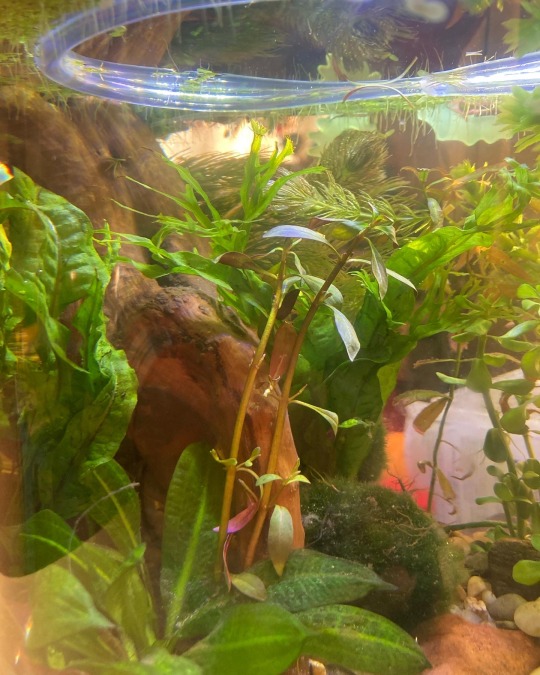
I’ve recently completely redone this tank so it’s got lotsa plants in here. I always wanted a set up like this so now I have it, and I gotta say, it’s nice to stare at. New light was installed, spider wood branch added, pothos cuttings, sword rosette, duckweed and moss balls still here, bacopa, ludwigia, anacharis, java fern, hornwort.
8 notes
·
View notes
Text

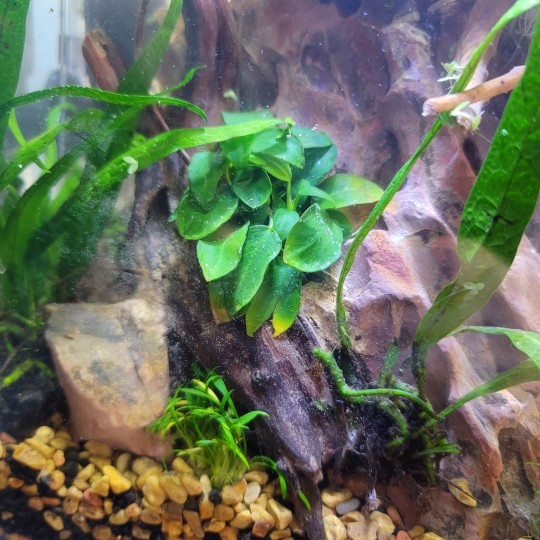




Shrimp tank update!
Today marks week 2 of cycling, and lord am I tired.
Finally got the anubias Nana petit and LORD did I spend a long time cussing and yelling and getting so upset bc I uprooted three of the crypts and had to take the whole hardscape out and fish out the duckweed and, and, and.
But it's done!! I got the new plants put in and I added that extra Lil piece of driftwood there by the heater, fished all the duckweed off the filter intake and swapped out the pothos.
All that's left is to let it finish cycling get the livestock! Well and eventually remove the pothos and add in the rabbits foot fern there on top
2 notes
·
View notes
Text
Plants in my 20gal guppy tank!
Banana Plant
Subulata Bunch
Bacopa
Corkscrew Val
Java Moss
Hydrocotyle Japan Mat
Undulata
Ozelot Sword
Plants in my 15gal!
Amazon Sword
Java Fern
Aubias Frazeri
Dwarf Lily
Plants in my 5gal!
?????? Aqua Flora Plant ?????
Duckweed
Anubias Nana
4 notes
·
View notes
Text


Noticed something green floating in my water lily “pond” and at first I thought it would be duckweed but turns out to be azolla mosquito fern or sometimes called fairy moss.
I took one piece out and placed it under grow lights. I think it’s cute. The rest are left in the “pond”.
3 notes
·
View notes
Photo
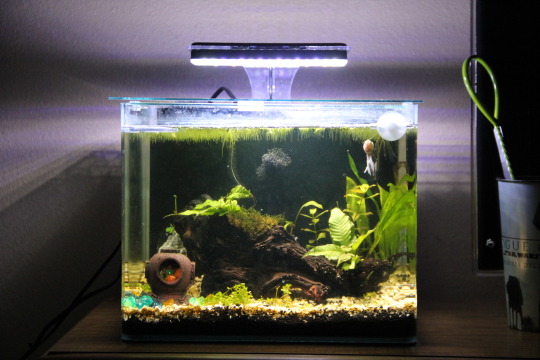
This is a 6.8 gallon tank made by Imagitarium. My Halfmoon King Betta Macumber’s little tank - some ludwiga repens in the back, el nino and java fern with some java moss. My poor attempt to carpet montecarlo is seen - it hasn’t died at all but it hasn’t spread so I guess I have little bushes instead of a carpet. Some duckweed and a little bit of frogbit are floating on top. There is also an amazon plant in the corner that’s dying so I need to throw a root tab under there...
There is also a nerite snail named Truffle that has now laid a million eggs all over that beautiful Mopani driftwood lol.
2 notes
·
View notes
Text

The Benefits of Adding Plants to a Pond
Adding plants to your pond can significantly enhance its aesthetic appeal while providing numerous benefits to its ecosystem. Whether you have a small backyard water feature or a large natural pond, incorporating aquatic plants can create a balanced and thriving environment. In this comprehensive guide, we'll explore the advantages of adding plants to your pond, from water quality improvement to creating a habitat for wildlife.
Why Add Plants to Your Pond?
Plants play a crucial role in maintaining a healthy pond ecosystem. They contribute to the oxygenation of water, absorb excess nutrients, provide shade, and create a natural habitat for fish and other aquatic organisms. By incorporating a variety of plants, you can establish a balanced ecosystem that is both visually appealing and environmentally sustainable.
Oxygenation and Water Quality
One of the primary benefits of adding plants to your pond is their role in oxygenation and water filtration. Through a process called photosynthesis, aquatic plants absorb carbon dioxide and release oxygen, helping to oxygenate the water. This is especially important in ponds with high fish populations, as it ensures an adequate supply of oxygen for fish and other aquatic life.
Types of Pond Plants
There are various types of plants that you can add to your pond, each serving a different purpose and contributing to its overall health and beauty. These include:
1. Floating Plants
Floating plants, such as water lilies and duckweed, float on the surface of the water and provide shade, reducing the growth of algae. They also help to oxygenate the water and provide habitat for fish and other aquatic creatures.
2. Submerged Plants
Submerged plants, such as hornwort and anacharis, grow entirely underwater and help to oxygenate the water while absorbing excess nutrients. They also provide hiding places for fish and can help to stabilize the pond's ecosystem.
3. Marginal Plants
Marginal plants, such as cattails and iris, grow along the edges of the pond and help to filter runoff water, preventing pollutants from entering the pond. They also provide habitat for amphibians and insects and add beauty to the pond's perimeter.
Maintenance and Care
While adding plants to your pond can provide numerous benefits, it's essential to properly maintain them to ensure their health and longevity. Regular maintenance tasks may include:
Pruning dead or overgrown foliage.
Removing debris and excess algae.
Fertilizing plants as needed.
Dividing and replanting overcrowded specimens.
Adding plants to your pond is a fantastic way to enhance its beauty and promote a healthy ecosystem. Whether you're looking to improve water quality, provide habitat for wildlife, or simply enjoy the serene beauty of aquatic plants, incorporating them into your pond can have numerous benefits. By selecting a variety of plant species and properly maintaining them, you can create a thriving ecosystem that brings joy and tranquility for years to come.
FAQs
1. Can I add plants to any type of pond?
Yes, you can add plants to virtually any type of pond, including natural, man-made, and even small backyard water features. However, it's essential to choose plant species that are suitable for your specific pond environment and to properly maintain them to ensure their health and vitality.
2. Will adding plants to my pond attract mosquitoes?
While stagnant water can attract mosquitoes, properly maintained ponds with a balanced ecosystem are unlikely to become breeding grounds for mosquitoes. In fact, many pond plants, such as mosquito fern and water hyacinth, can help to deter mosquitoes by shading the water's surface and reducing algae growth.
3. How many plants should I add to my pond?
The number of plants you should add to your pond depends on its size, depth, and the specific species of plants you choose. As a general rule of thumb, aim to cover approximately 60-70% of the pond's surface area with plants to achieve optimal water quality and ecosystem balance. Additionally, consider the growth habits of the plants and their potential to overcrowd the pond if left unchecked. Regular monitoring and maintenance will help to ensure a healthy balance of plant life in your pond.
0 notes
Text
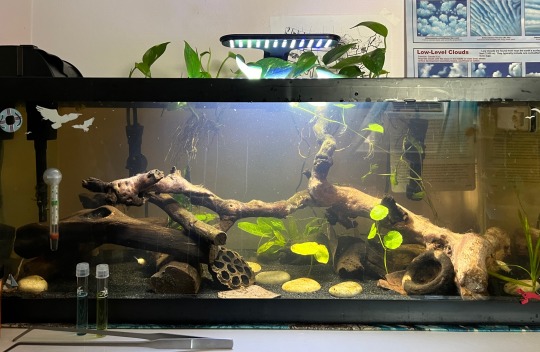
my tank as it stands right now, at some point in the near future I may get two more stem plants to put in the back left corner and back right just behind the big driftwood branch. I hope my Amazon sword will get bigger over the rest of the year, along with the Java fern. the Pennywort is growing quickly! I’m waiting for a floating corral to come in by tonight so I can get all the sunken duckweed back up and hopefully they’ll start reproducing again. a lot of my frogbit died due to the lack of a corral, but some remains, so I’m hoping they get to reproduce too. I think some anubias would also look quite nice on the tree grotto now that it’s waterlogged and the big rock was moved, it would provide some shade again.
1 note
·
View note